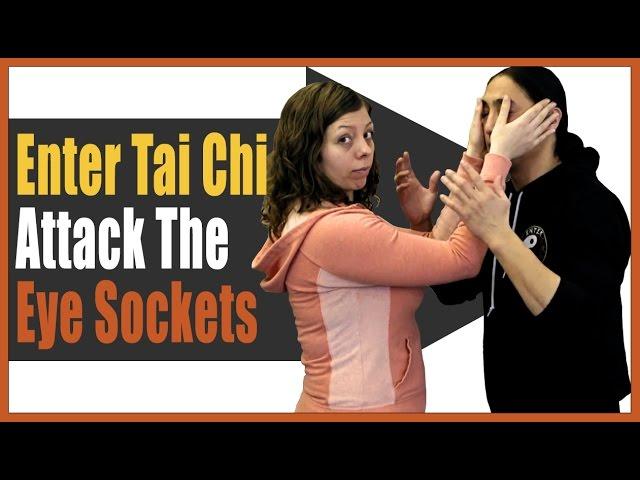Table of Contents
- Effective Self-Defense Strategies for Targeting Vulnerable Facial Areas
- Anatomy and Impact Benefits of Striking the Eyes, Nose, and Mouth
- Techniques and Precision Tips for Safely Targeting the Attacker’s Face
- Legal and Ethical Considerations When Employing Facial Targeted Defense
- In Summary
Effective Self-Defense Strategies for Targeting Vulnerable Facial Areas
When faced with a physical threat, precision is key. Targeting the eyes can instantly impair an attacker’s vision, creating a critical window for escape or further defensive action. Techniques such as a quick jab, poke, or scratch to the eyes are highly effective because they exploit one of the most sensitive and vulnerable areas of the face. Similarly, the nose is a strategic point; delivering a sharp upward strike or palm thrust can cause significant pain, disorientation, and watery eyes, further diminishing an attacker’s ability to continue their assault.
The mouth presents another prime target during self-defense situations. By striking the jaw or applying pressure to the lower lip, you can provoke a strong reflexive response, such as staggering or falling back. These actions can momentarily incapacitate an aggressor, giving you the upper hand. To maximize impact, defenders should:
- Aim for quick, decisive strikes rather than sustained contact.
- Use the palm, knuckles, or fingertips, depending on the area targeted.
- Leverage natural body mechanics like rotating hips and shoulders to boost power.
Anatomy and Impact Benefits of Striking the Eyes, Nose, and Mouth
Striking the eyes, nose, and mouth targets highly sensitive anatomical structures that can incapacitate an attacker instantly. The eyes contain delicate tissues and nerves, making them vulnerable to pain and temporary blindness when struck accurately. Similarly, the nose is rich in nerve endings and blood vessels; a sharp impact causes intense pain, disorientation, and often bleeding, impairing the attacker’s breathing and focus. The mouth, lined with soft tissue and teeth, when hit firmly, can cause significant discomfort, disrupt breathing, and even induce a reflexive gag or choke response. These areas function as critical control points in self-defense due to their accessibility and impact on an attacker’s vital sensory functions.
Beyond immediate pain and sensory disruption, targeting these facial regions offers strategic advantages that enhance personal safety. Effective strikes can create critical escape opportunities by immobilizing or deterring aggression without requiring excessive force or prolonged confrontation. Practitioners can leverage quick, precise hits to maximize impact while minimizing the risk of escalation. Recognizing the physiological vulnerabilities of the eyes, nose, and mouth also underscores their importance in self-defense training, empowering individuals to respond with confidence in high-pressure situations.
- Eye strikes: induce temporary blindness and pain, disrupting attacker’s vision.
- Nose strikes: cause pain, bleeding, and breathing difficulty from a sensitive nerve network.
- Mouth strikes: affect teeth and soft tissues, causing pain and potential choking reflex.
Techniques and Precision Tips for Safely Targeting the Attacker’s Face
Mastering the art of accurately targeting the attacker’s face demands a blend of swift reflexes and refined technique. Practitioners are encouraged to maintain a balanced stance with relaxed shoulders to optimize mobility and control. When aiming for the eyes, a precisely flicked fingertip or a cupped palm strike can effectively induce momentary disorientation. Approaching the nose, the use of a sharp upward jab or a deliberate push disrupts the attacker’s breathing, providing an immediate tactical advantage. Importantly, these maneuvers must focus on controlled force; excessive aggression risks injury to oneself or unintended escalation.
Execution relies on timing and positioning rather than brute strength. Aiming for the mouth, for example, is best achieved with a quick horizontal palm strike or a pushing motion, targeting the lips or chin to compromise verbal commands and oral function. Key precision tips include:
- Maintaining eye contact to anticipate movements
- Utilizing peripheral vision to prevent blind spots
- Breathing steadily to preserve reaction speed
- Practicing opponent simulation drills to develop muscle memory
Safety is paramount; training under supervision ensures techniques are applied with calculated pressure, reducing risk while maximizing effectiveness.
Legal and Ethical Considerations When Employing Facial Targeted Defense
When applying self-defense techniques that focus on the attacker’s facial features, it is essential to weigh the legal ramifications associated with such actions. Laws regarding self-defense vary widely by jurisdiction, but most emphasize the principle of proportionality-responding with only the amount of force necessary to neutralize the threat. Striking sensitive areas like the eyes, nose, or mouth can cause significant injury, which may escalate legal consequences if deemed excessive. Responsible practitioners must familiarize themselves with local statutes and understand that misuse could lead to criminal charges or civil liabilities.
Beyond legality, ethical responsibility must guide any defensive encounter. Techniques targeting the face are potentially disfiguring, so the intent should always be to disable or create an opportunity to escape, rather than inflict permanent harm. Developing awareness and restraint is crucial, alongside mastering alternative methods that prioritize safety. Key ethical considerations include:
- Assessing threat severity before deciding on facial targeting.
- Avoiding unnecessary escalation once the attacker is subdued.
- Respecting human dignity even in moments of high stress.
In Summary
In conclusion, prioritizing the attacker’s eyes, nose, and mouth in self-defense situations offers a strategic approach to quickly disabling threats and creating opportunities for escape. By understanding the vulnerability of these critical targets, individuals can enhance their ability to protect themselves effectively. As self-defense continues to be a vital skill in today’s world, training focused on precision and control remains essential for ensuring personal safety.Check Our Other Blogs
- StunGun – Your Trusted Source for Stun Guns, Laws, and Self-Defense Tips
- PepperSprayLaws – Your Trusted Resource for Pepper Spray Information
- StunGunLaws – Your Trusted Guide to Stun Gun Legality and Safety




